African Legend: Chef Yohanis
The superstar Ethiopian chef talks spices, community cooking and using sound waves to bake bread
Chef Yohanis Gebreyesus likes fish. Like, really likes fish. We’ve been talking about it for a good five minutes now. He occasionally holds up his phone to display a photo of an unusual catch. “This one’s called arowana,” he says, pointing at the screen. “It has an interesting bone structure. Once we process it, it almost looks like a rack of lamb.”
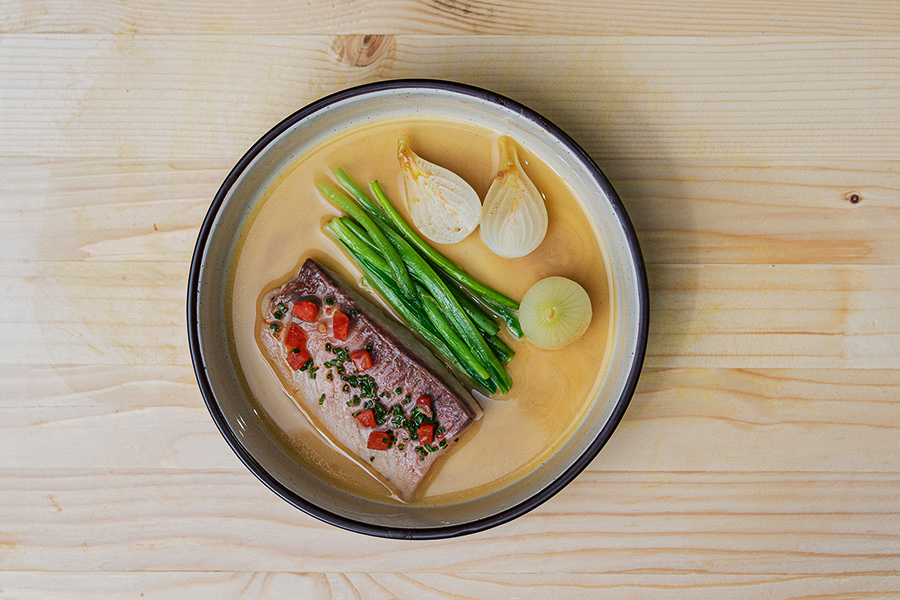
A colourful layout at Yohanis’s Asabet restaurant / Image: Aron Simeneh

His love for these scaly swimmers has become so intense, in fact, that his most recent opening – Asabet – is a restaurant entirely dedicated to Ethiopian seafood. “In Addis, fish isn’t very popular. People only really eat three types: perch, catfish and tilapia. But there are more than 200 varieties of local lake fish to discover. I wanted to introduce them into peoples’ diets and, in a way, shape the eating habits of the city,” he explains.
When you get down to it, though, Gebreysus’s excitement is about more than just fish. What he’s really passionate about is discovering endemic species, sharing Ethiopian food culture and creating something genuinely delicious. And maybe fish a little bit, too.
It’s why his favourite meal is raw meat, a delicacy in Ethiopia. “We’re quite carnivorous people,” he laughs. “The story behind it is that Ethiopia had a lot of battles back in the day and so to avoid giving our position away with the sight and smell of fire, they started eating raw meat rubbed in spices. Nowadays it’s considered a luxury.” A whole cow is suspended upside down and people get together and while away their afternoon tucking in. They wash it down with a popular local drink – a wine, beer and soda mix. It’s about more than food; it’s the story and the ceremony.
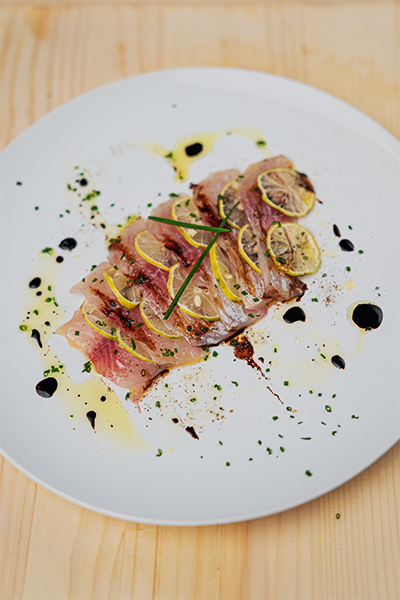
Another of Asabet’s artfully prepared dishes / Image: Aron Simeneh
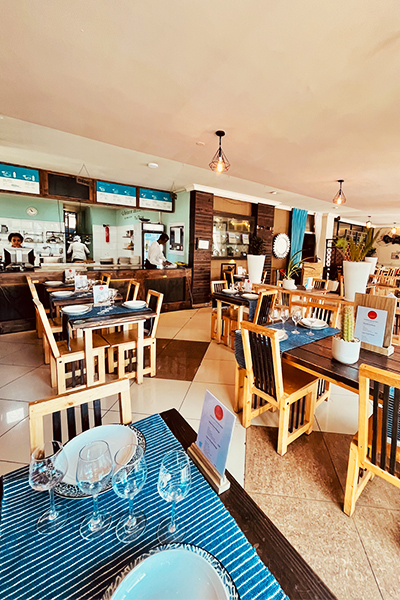
“Seafood concept restaurant” Asabet
Gebreyesus has developed the perfect platform to spread these ideas. Having grown up around food – his family own the restaurant Antica in Addis and his mum even cooked the spread for her own wedding – he was almost destined to work in the culinary arts. But it was in France that he got his proper training at Lyon’s Institut Paul Bocuse.
“We want to teach what we know and learn what we don’t”
From there, he went on to intern at The St Regis in California and it was there he had the idea for the TV show that made him an Ethiopian celebrity. “We would watch culinary shows in the staff areas during our lunch hours and there was one that really intrigued me: Diners, Drive-ins and Dives. I thought it was friendly, the food looked super tasty, and it showed off a diversity of food in America that I’d once been arrogant enough to assume didn’t exist,” he says. “I thought to myself, ‘could you imagine if we did this for Ethiopian food?’” The country has more than 117 million inhabitants and over 90 ethnic groups, all with their own recipes and methods.

Yohanis and his culinary crew

So, he created Chef Yohanis Qegnet, a series of 30-minute episodes that ran on EBS (Ethiopian Broadcasting Service) TV exploring the various culinary legacies of Ethiopia and developing new recipes inspired by them. “We did more than 88 episodes and my favourite thing I learned was that in some parts of Ethiopia, sound vibrations are used in cooking,” he says proudly. “We went to Lalibela, where they make a version of injera with oats instead of teff. It’s called aja kita.” What determines whether these breads are good or not is the number of broken air bubbles that appear on the top and give them their signature look and spongy texture. “To help this process along, the person cooking the bread gathers the kids around the griddle and gets them to whistle, which helps shatter the air pockets trapped in the dough. It’s incredible.”
His TV show put Gebreyesus in the public eye like never before and led to a host of new opportunities. He became a consultant for the Hyatt Regency and Ethiopian Airlines; he was featured on the likes of the BBC, CNN and in The Guardian; he published a cookbook exploring Ethiopia’s native dishes, for which he won a coveted James Beard Award and the IACP Julia Child First Book Award (as well as being shortlisted for the UK’s Guild of Food Writers Awards in 2019). Then, in 2020 and 2021, he opened his first two restaurants: Weyra and Asabet.
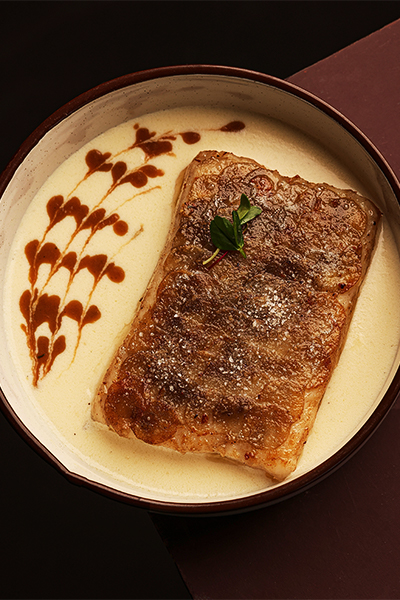
Image: Imran Mazar
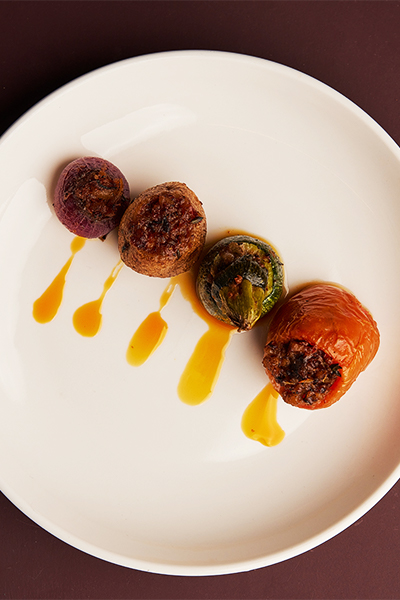
Image: Imran Mazar
What’s next is even more exciting. Later this year he’ll be opening Asabet’s sequel: Bunabet. This time it’s a restaurant and retail space focused on Ethiopian spices. It will comprise a spice bar (featuring a range of spices, blends and rubs), a coffee bar, a mushroom bar (grown using coffee waste), a drinks bar (complete with tej – Ethiopian honey wine – beer and areki – an Ethiopian, grain-distilled spirit), a honey bar, and a dairy bar (with homemade spiced cheeses). Talk about – ahem – setting the bar high. And instead of looking at a menu, you’ll smell it – the scent will change at different times of the day.
And then there’s the culinary school he’s cooking up. As part of the new Zoma Village in Entoto Park, a second branch of Weyra will be opening imminently. It’s set to house CY Culinary and Research Institute, a place where trainee chefs from all over the world can come to learn and experiment, while researchers can delve into Ethiopian food history, recipes and ingredients. “We want to teach what we know and learn what we don’t,” explains Gebreyesus.
What strikes me about the chef during our conversation is that he seems to genuinely care about making a difference. Not only within Ethiopia, but the world in general. He’s set up “fish butcheries” around Addis, for example, where people can go and learn how to prepare Ethiopian fish. They get lunch and a class for the equivalent of about £4. His aim is not only to help people eat healthier and cheaper, but also to be more eco-friendly, as consuming local fish is better for the environment. “We’re living in a global world where anything I do can impact you, too,” he says. “It’s important that we’re responsible in the coming years if we want future generations to thrive.”